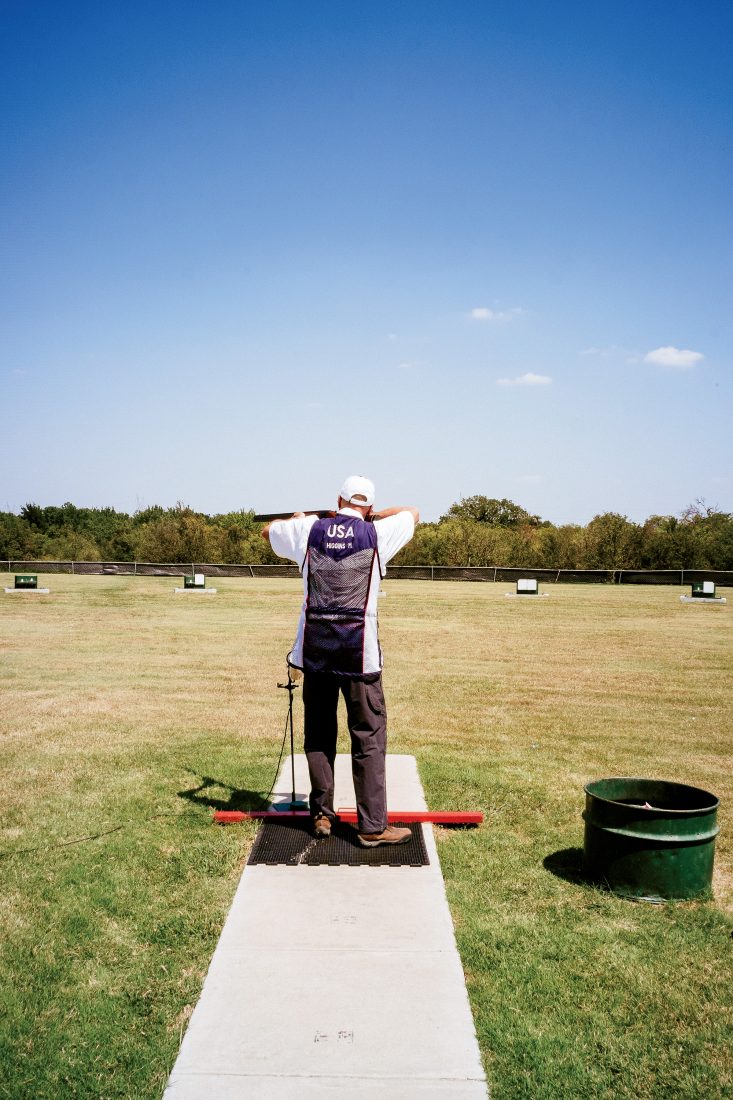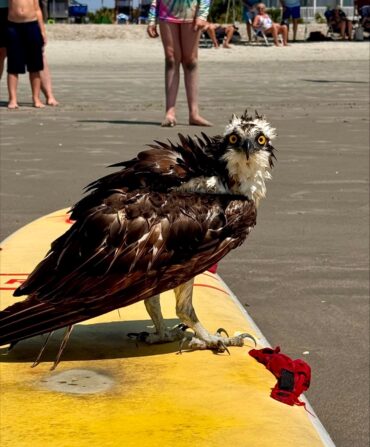When the target flies, it’s like the love child of a mourning dove and a bobwhite quail. It flutters and zings, accelerates and swoops off in unconsidered directions—just like a live bird. The game is called helice (pronounced hell-ees), a shotgun sport that has been well established across Europe and is catching on stateside. “This is the closest thing to live bird shooting you will ever see that doesn’t have a live bird in it,” says Michael B. Higgins, a former aerospace consultant who now runs the Long Straw Ranch shooting preserve in North Texas and serves as the president of the U.S. Helice Association. “If you are a hunter, this is the game for you.”

Photo: Tyler Sharp
Give 'em Helice
Targets on the launcher at Dallas Gun Club.
Helice was first developed in Europe in the 1960s—as a replacement for live pigeon shoots, in fact. The targets, called ZZ birds, are composed of a round plastic “witness cap” affixed to a propeller. When struck by pellets, the witness cap separates from the propeller, signaling a scoring hit. On the target launcher, an oscillating motor spins the ZZ birds at five thousand revolutions per minute and more, like a turbocharged windup toy. A helice course, called a ring, can include five or seven launchers arranged in a semicircle in front of the shooting post. The launchers are voice activated, and they go off in random order so that the shooter has no idea where the next bird will fly. To score, the shooter has to knock the witness cap from the propeller so that it lands within a fence twenty-one meters beyond the launchers. “The disk will pick up every little breath of wind and change direction, jink left, juke up and down, flutter, and dive,” Higgins says. “It is very, very fast. You have a second to make the shot.”

Photo: Tyler Sharp
Michael Higgins showcases a flying Helice target, called ZZ birds, composed of a round plastic cap affixed to a propeller.
Given such complexity, it’s no surprise helice is hardly an inexpensive endeavor. Shooting a round of thirty ZZ birds can top $90, plus shells. Gunners mostly favor over-and-unders due to their fast cycling rates when firing both barrels in the blink of an eye. Despite the sport’s European roots, however, the U.S. team holds the current helice world championship. All of its members hail from the South, as does the reigning ladies’ world champion, Mimi Wilfong, who is from Malakoff, Texas. “The Europeans have had this game to themselves for a long time,” Higgins says, “so it’s been fun to be the new kids on the block and be successful at it.” Much of that success, he figures, is based on the fact that Southern shooters aren’t terribly thrown by a shotgun target that seems to bend the laws of physics. “Helice tends to appeal to folks who are field shooters and used to live birds,” Higgins says, “and to international-style skeet shooters used to a faster target.” Still, it can be a humbling endeavor. Over an entire year, the number of perfect 30 scores shot on a helice course can often be counted on one hand.
The Dallas Gun Club and several others in Texas and beyond have installed helice courses, and a growing number of private landowners are setting up launchers on their properties—a five-launcher ring can range from $15,000 to $30,000. But no matter where you shoot, Higgins has one bit of advice. “See a flash and a blur and pull the trigger,” he says. “Stop to think about it and you’re screwed.”








